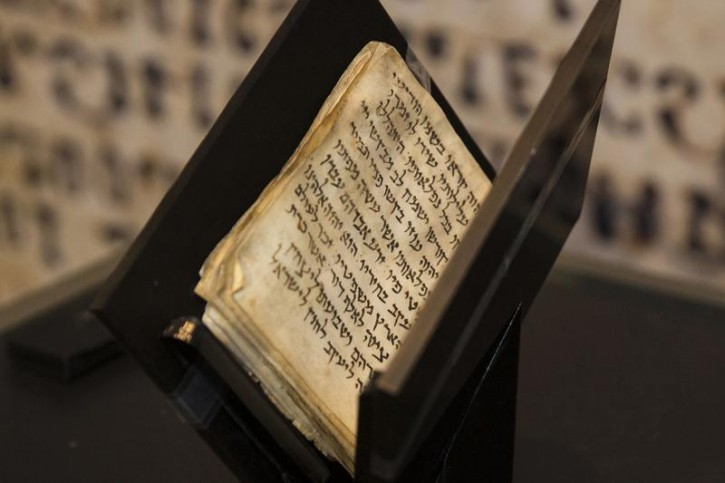 Jerusalem – An Israeli museum on Thursday unveiled what it says in the oldest known Jewish prayer book in the world, dating back to the 9th century A.D.
Jerusalem – An Israeli museum on Thursday unveiled what it says in the oldest known Jewish prayer book in the world, dating back to the 9th century A.D.
Subscribe to our Daily Roundup Email
The prayer book, about 10 centimeters (four inches) long and seven centimeters wide, is written in Hebrew, contains about 50 pages, and is still in its original binding. It was donated to the Bible Lands Museum in Jerusalem by Oklahoma businessman Steve Green, a devout Christian and owner of one of the largest collections of rare biblical artifacts in the world.
Green’s family controls the Hobby Lobby crafts store chain, which won a closely watched U.S. Supreme Court ruling in June that allows it to assert religious beliefs to avoid covering contraceptives in employee health plans.
Green told The Associated Press that the book originated in the Middle East and that three experts, working independently, had carbon-dated it to 820 A.D.
Haggai Ben Shammai, the academic director of Israel’s National Library, agreed that the prayer book could be the most ancient Hebrew codex known to exist, though he said there is another contender in Germany.

A codex is a manuscript bound in book form with writing on both sides of page. Until the 5th or 6th century, Hebrew documents were written on parchment scrolls, so a codex represents a big step forward in the history of manuscripts.
“I have no doubt it’s an important thing,” Shammai said. “We don’t have very ancient examples of Jewish codexes.”
But Aviad Stollman, curator of the National Library’s Judaica collection, said he is not convinced Green’s donation is from the 9th century, or that it is even an ancient codex or Jewish prayer book. He said the manuscript needed further research to shed light on its authenticity.
“Perhaps it is a collection of papers,” Stollman said. “In some ways it looks as if someone took a bunch of papers and collated them.”
Museum director Amanda Weiss said she was convinced that the prayer book is genuine based on the carbon dating of Green’s experts. Alluding to the prayers it contains — prayers still recited by observant Jews today — she said it had special cultural significance and is “a testament to the continuity of the Jewish people.”
Green said he came from a very religious family and had several relatives who had been clergymen. He said he donated the book because he wanted to “bring our love for the Bible to the land of the Bible.”
His family plans to spend hundreds of millions of dollars to create a Bible museum on land near the National Mall in Washington. It’s scheduled to open in 2017 and will display the family’s massive collection of biblical artifacts, including ancient texts.

Wrong. The oldest siddurim are definitely in my minyan
There appear to be many typos and missing words.
what an amazing find for an amazing people.
is it nusach ashkenaize.or sefard?……just wondering
a shana tova to all. -)
Simply amazing
There are an incredible mount of errors in the above siddur. Wrong words, wrong spelling and so on. I wonder who even wrote it.
As far as nusach, it does not appear that Boruch Sheomar is preceding Hodu, as it does in nusach ashkenaz. But there are so may errors, that there is no reliable indication.
Keep in mind that without printing, individuals would copy from another text to create their own siddur. The author of this siddur may have been just another weak link in an ancient game of copying “telephone”. Ink and paper were expensive. It’s possible that the author left out words he thought he would remember without having them written in. Only sifrei torah must be copied absolutely accurately.
Sorry but there seems to be problems with the style of writing and shape of lettering for it to be that age there are problems with the spelling , it was written by an ignoramus I don’t care which professor said how old it was .The truth will come out eventually. That it was dug up in Ireland doesn’t sound too realistic as it shows no damages from moisture, that it was written in bavel is also suspect. There are enough visible problems to suspect the item as a fraud